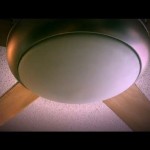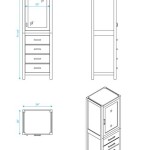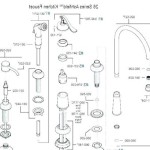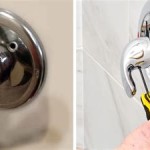Bathroom Sink Faucet Connection Size: A Comprehensive Guide
Understanding bathroom sink faucet connection sizes is crucial for a successful faucet installation or replacement. Compatibility between the faucet's supply lines and the existing plumbing in a bathroom significantly impacts the ease and effectiveness of the installation process. Ignoring these connection sizes can lead to leaks, water damage, and the need for costly professional assistance. This article provides a detailed overview of bathroom sink faucet connection sizes, common standards, and considerations for ensuring a proper fit.
The term "connection size" refers primarily to the diameter of the faucet's supply line connections and the corresponding water supply stops located beneath the sink. These connections are standardized to facilitate compatibility between different faucet brands and plumbing systems. However, subtle variations and regional differences can sometimes exist, making it essential to verify the connection size before purchasing a new faucet or attempting a replacement.
Identifying Common Bathroom Sink Faucet Connection Sizes
The most frequently encountered connection sizes for bathroom sink faucets are 3/8-inch and 1/2-inch. These measurements refer to the outer diameter (OD) of the compression fitting that connects the faucet supply line to the water supply stop valve. While other sizes exist, these two are the prevailing standards in residential plumbing.
3/8-inch Compression: This is arguably the most common size found in modern bathroom installations, particularly for single-handle faucets. The 3/8-inch compression fitting allows for a smaller, more flexible supply line, which is often easier to route in tight spaces under the sink. It's important to note that while the outer diameter of the compression fitting is 3/8 inch, the inner diameter of the pipe or tubing is smaller, to allow for the compression ring.
1/2-inch Compression: This size is more prevalent in older homes or in situations where a higher water flow rate is desired. The 1/2-inch connection provides a larger opening for water to pass through, potentially resulting in improved water pressure at the faucet. However, it is crucial to ensure that the water supply lines and stop valves are also sized to 1/2-inch to maintain consistent flow and pressure.
In addition to the compression fitting size, it's important to consider the thread type. In North America, National Pipe Thread (NPT) is the standard. The terms "male" and "female" are used to describe the threading on the faucet supply lines and the water supply stop valves. A male NPT fitting has threads on the outside, while a female NPT fitting has threads on the inside. Faucet supply lines typically have a female NPT fitting on one end to connect to the water supply stop valve, and a proprietary connection on the other end to connect to the faucet itself.
Determining the Correct Connection Size for Your Faucet
Several methods can be employed to determine the correct connection size for a bathroom sink faucet. These methods range from visual inspection to using measurement tools and consulting product specifications.
Visual Inspection: A preliminary visual inspection can often provide a good indication of the connection size. In many cases, the size is stamped or printed on the existing faucet supply line or the water supply stop valve. Look closely at the compression fitting or the body of the valve for markings that indicate the size (e.g., "3/8" or "1/2"). However, relying solely on visual inspection can be unreliable, especially if the markings are faded or obscured by corrosion.
Measurement Tools: Using a caliper or adjustable wrench to measure the outer diameter of the compression fitting is a more accurate method. Carefully measure the fitting and compare the measurement to the known sizes (3/8 inch, 1/2 inch, etc.). Remember that these measurements refer to the outer diameter of the compression fitting, not the inner diameter of the pipe or tubing.
Product Specifications: The most reliable method for determining the connection size is to consult the product specifications for both the existing faucet (if replacing) and the new faucet being installed. Most manufacturers provide detailed specifications, including the connection size, in the product manual or on their website. This information ensures that the new faucet is compatible with the existing plumbing.
Professional Assistance: If uncertainty exists or if any modifications to the plumbing are required, seeking assistance from a qualified plumber is recommended. A plumber can accurately assess the existing plumbing, determine the correct connection size, and ensure that the new faucet is installed properly and safely.
Factors to Consider When Choosing Faucet Connection Sizes
Beyond simply matching the existing connection size, several other factors can influence the choice of faucet connection size. These factors include water pressure, flow rate requirements, and the type of plumbing in the building.
Water Pressure: Water pressure is a key factor influencing faucet performance. Low water pressure can result in a weak stream of water, while excessively high water pressure can damage the faucet and plumbing fixtures. While the connection size itself does not directly regulate water pressure, it can affect the flow rate. A larger connection size (e.g., 1/2 inch) may be preferred in areas with low water pressure to maximize water flow.
Flow Rate Requirements: Different faucets have different flow rate requirements. Some faucets, such as those with multiple spray settings or high-flow designs, require a higher flow rate to function optimally. In such cases, a larger connection size may be necessary to provide sufficient water volume. However, it's important to ensure that the water supply lines and stop valves are also sized appropriately to support the increased flow rate.
Existing Plumbing: The existing plumbing in the bathroom is a primary constraint when choosing a faucet connection size. Unless significant plumbing modifications are planned, the new faucet should be compatible with the existing water supply lines and stop valves. Attempting to force mismatched connections can damage the plumbing and lead to leaks. If transition is needed, ensure appropriate fittings are used by a professional plumber.
Building Codes: Local building codes may stipulate specific requirements for plumbing fixtures and connection sizes. Consulting with a local building inspector or a qualified plumber is recommended to ensure compliance with all applicable codes. Failure to comply with building codes can result in fines or the need for costly rework.
Supply Line Material: Faucet supply lines are typically made of braided stainless steel, copper, or PEX (cross-linked polyethylene). Braided stainless steel supply lines are flexible, durable, and resistant to corrosion, making them a popular choice. Copper supply lines are more rigid but offer good resistance to high temperatures. PEX supply lines are flexible, lightweight, and resistant to freezing, making them suitable for a variety of applications. The choice of supply line material can impact theease of installation and the overall lifespan of the plumbing system.
Shut-Off Valves: Water supply stop valves allow for shutting off the water supply to the faucet for maintenance or repairs. These valves are typically located beneath the sink and connect to the faucet supply lines. It's important to ensure that the water supply stop valves are in good working order and that they match the connection size of the faucet supply lines. Replacing faulty or outdated water supply stop valves during a faucet installation or replacement is recommended to prevent future leaks and water damage.
Adapters and Reducers: In some cases, it may be necessary to use adapters or reducers to connect a faucet with a different connection size than the existing water supply lines. Adapters and reducers allow for connecting pipes or fittings of different sizes or thread types. However, using adapters and reducers can increase the risk of leaks, so it's important to use high-quality fittings and to ensure that they are properly installed. Using too many adapters in a series can also reduce water pressure.
Professional Installation: Professional plumbers can offer considerable expertise in selecting and installing bathroom sink faucets. Their knowledge extends to understanding plumbing codes, proper connection techniques, and potential issues that might arise during installation. While a DIY installation might seem cost-effective initially, improper installation can lead to costly repairs down the line. Therefore, engaging a professional plumber ensures a secure and compliant installation.
Faucet Design Considerations: Different faucet designs can also influence connection considerations. For example, a widespread faucet might require more flexible supply lines than a single-hole faucet. The distance between the valve connections and the water supply stops should be measured to ensure adequate supply line length. Also, the faucet's mounting style (deck-mounted, wall-mounted) affects the type of connections needed and accessibility for future maintenance.

Gotonovo 3 Hole Widespread Bathroom Sink Faucet Double Cross Handle De

How To Calculate The Overhang And Reach Dimensions Of A Lavatory Faucet Moen Solutions

Gotonovo Bathroom Sink Faucet Deck Mount Widespread Double Mixing Tap

The Plumber S Choice 1 2 In Ips X 3 8 Compression 20 Braided Faucet Supply Connector Pack Nl 27120 Home Depot

What Size Supply Line Is Needed For A Kitchen Faucet Mr Faucets

Aquaterior 28 Faucet Connector Hoses Hot Cold 3 8 Xm10 Sink Faucets Bathroom

Mondawe 4 92 In H Rectangular Shape Single Handle Hole Bathroom Sink Faucet Brushed Nickel Or 1008ns Dg The Home Depot

How To Choose A New Bathroom Sink Faucet Vevano

36 Length Faucet Supply Line Bathroom Kitchen Lines Braided Nylon Sink

Moen Lindor Spot Resist Brushed Nickel Widespread 2 Handle Watersense Bathroom Sink Faucet With Drain In The Faucets Department At Com
Related Posts







